








Irish Seisiún Newsletter
Thanks to our past editors - Mary Gallacher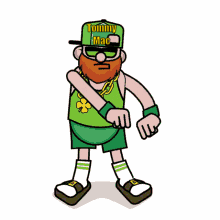 and Bill Padden
and Bill Padden
Editor Tommy Mac 
............
....Today's date and new proverb
![]()
Tommy Mac here
A good friend of mine and contributor to this newsletter, Colum, has sent in the links to a wealth of information about our Irish music.
Thank you Colum
A Great source of information and lessons in Irish Traditional Music
ITMA - The Well for Irish Traditional Music, Song and Dance
Merrijig Creek – New Tunes and Arrangements
![]()
Sunday's Seisiún
for October 19, 2025
‘Tá dúil ár n-anama sa cheol againn.’
Music is our soul’s desire.
.......Thanks again to
Bob Murphy, Pat Quinn, Randy Powell, Art Jacoby, and Kevin Westley
for supplying photos and info about our sessiuns.
Great session today.
In attendance Tom on bodhran, Rosemarie on Irish flute and tin whistle, Art and Anita on fiddles, Seth on banjo/ukelele, Grace on accordion, and Randy (myself) on bouzouki.
Tunes included: Tell Her I Am; Haunted House set; The Banshee set; Garech's Wedding set; Father Kelly's Reels set; Charlie Harris Polka set, Lads of Laois set; Chief O'Neill's, Kitty's Wedding, and Home Ruler; Christmas Eve, Killavil Reel, and Boys of Ballisodare; Frank's Reel, Easy Club, and Tommy People's; Terry Teehan's set; Whistler at the Wake and The Old Flail; Ryan's Slip Jig, Drops of Brandy, and Foxhunt; Lark in the Morning, and Connaughtman's Rambles.
Best,
Randy
.
Click any of the above logos to go to that site
.
 "That’s
How I Spell Ireland"
"That’s
How I Spell Ireland"
Saturdays at 7 to 8 PM EST.
You can listen on 88.7FM or WRHU.org.
For a request please text me on 917 699-4768.Kevin and Joan Westley
Note: Show will be preempted whenever the NY Islanders have a Saturday game
![]()

Finnegan's Events
Check out their calender
They support us - Let's support them
![]()

E-Mails Received
![]()
Old Ireland

Two young girls
Rostrevor, Co. Down. c1890s
![]()
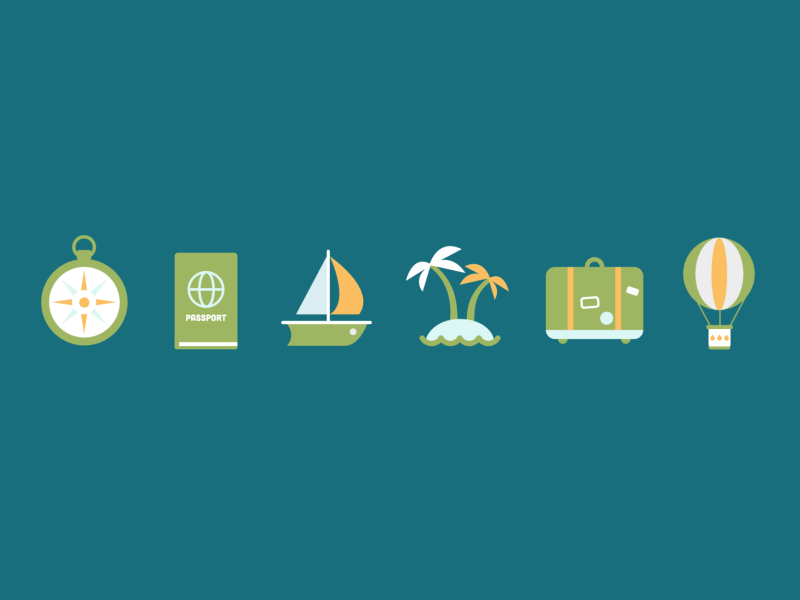
FAVOURITE PLACES IN IRELAND
The best fireplaces to curl up in front of this fall in Ireland
Curl up by Ireland's coziest hearths this autumn
IrishCentral Staff @gotoirelandus Oct 13, 2025

Bushmills Inn, County Antrim. TOURISM IRELAND
As chill winds begin to sweep across the Emerald Isle, we invite you on a journey to six of Ireland's most enchanting fireplaces, tucked away in pubs, inns, and historic homes. From roaring turf fires in Antrim to oak-beamed lounges in Connemara, your next getaway might revolve around the flicker of a flame. Nothing beats a blazing fire when the cold, crisp weather sets in. Here are six cozy firesides in Ireland to snuggle up by. The hotels and pubs you can find them in aren't too bad, either.
Knockranny House Hotel and Spa, County Mayo

Knockranny House Hotel and Spa, County Mayo
Overlooking the rugged peaks of Croagh Patrick and the beautiful Clew Bay, Knockranny House's plush interiors, antique furniture, and open log fires are a cosy welcome after a bracing walk. There's a roaring fireplace in the lobby, but we recommend you get snug in the oak-panelled Brehon Bar and enjoy a cosy afternoon tea beside a crackling fire.
Bushmills Inn, County Antrim

Bushmills Inn, County Antrim
There are several turf fires at the Bushmills Inn, burning pretty much around the clock on chilly days. The inn is a stone's throw from the Giant's Causeway and the Carrick-a-Rede Rope Bridge, so pick your nook (or cranny) and settle in for a rest and maybe a sneaky snooze after a day of adventures. The inglenook fire by the restaurant is the perfect place to indulge in some fine malt from the hotel's private cask. Then, check out the secret library…
Ballynahinch Castle Hotel, County Galway

Ballynahinch Castle Hotel, County Galway
Nestled in the rugged landscape of Connemara on a 450-acre estate overlooking the Owenmore River, Ballynahinch Castle's elegant countryside decor boasts antique furnishings and roaring wood-burning fireplaces. The massive stone fireplace in the foyer is perfect for sinking into a plush seat, hands firmly wrapped around a hot mug of cocoa. Come dinnertime, the Fisherman's Pub's log fire casts a warm orange glow on quirky angling memorabilia.
Crosskeys Inn, County Antrim

Crosskeys Inn, County Antrim
The Crosskeys Inn dates back to 1654, making it one of the oldest thatched pubs in Ireland. Its low ceilings and whitewashed walls make this beautifully antique space a cosy den to hunker down from the cold. Not content with being one of the oldest pubs, the Crosskeys Inn is often regarded as one of the best music pubs on the island. Toast your toes by the large open fireplace during a traditional Irish music session on the weekend.
Blackhead Lightkeeper's House, County Antrim

Blackhead Lightkeeper's House, County Antrim
Staying in a lightkeeper's house tops our list as a heavenly winter hideaway. Next door is Blackhead lighthouse, the light of which once guided some of the most famous ships Belfast ever built, among them the Titanic. Perched on the edge of a cliff at Blackhead, the good news is that this Irish Landmark-managed property is available to rent as self-catering accommodation. Stunning seascapes are best enjoyed with a soundtrack of a crackling fire on a stormy winter's evening.
Temple House, County Sligo

Temple House, County Sligo
You can expect a welcome as warm as the fire at the Georgian-style Temple House, run by Roderick and Helena Percevel. The house, which has been in the Perceval family since 1655, enjoys a sublime setting overlooking Temple House Lake and the 13th-century Knights Templar castle. Enjoy tea and hot, buttered scones by a blazing fire in the morning room, or a delicious dinner in the dining room by the homey hearth.
Content by Ireland's Content Pool.
This article first appeared on Ireland.com. For more fabulous travel tips, click here.
* Originally published in 2016, updated in Oct 2025.
![]()
Travel Quiz
Can you identify this site and it's location in Ireland?

Answer in next week's Newsletter
Last weeks Travel Quiz answer
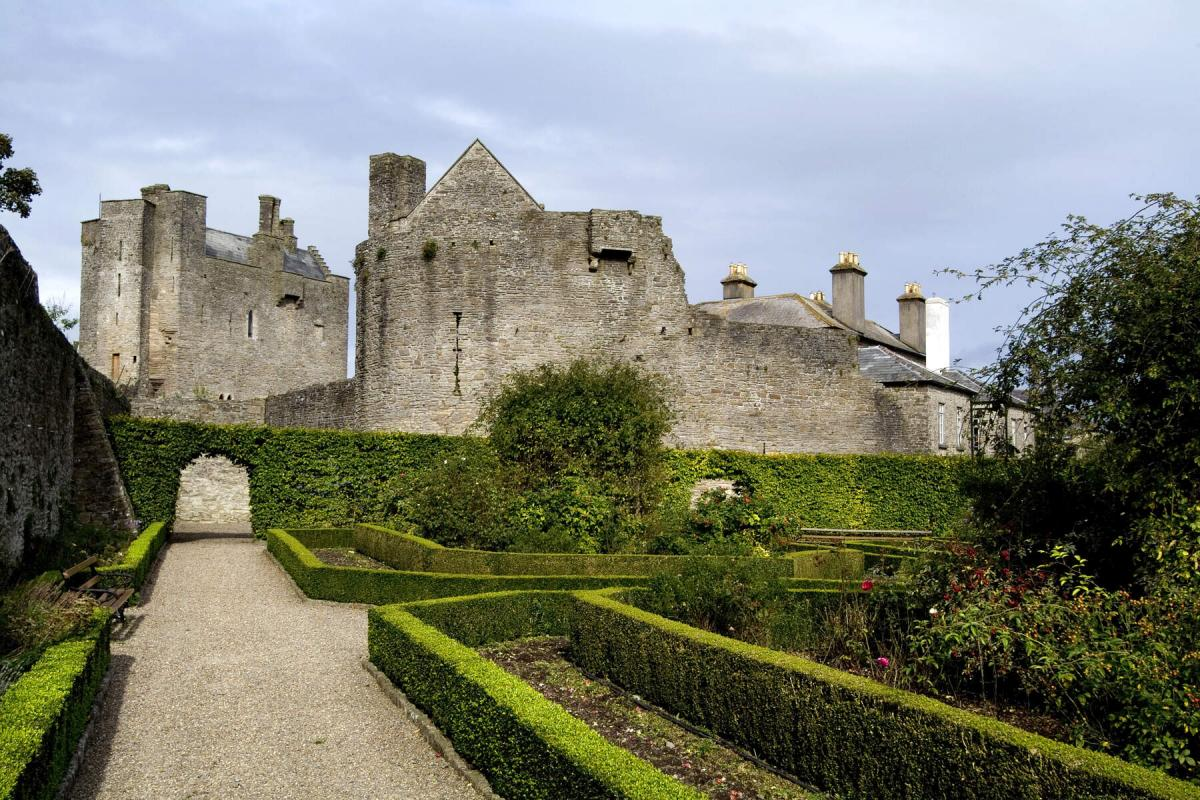
Roscrea Castle,
County Tipperary
![]()
Irish Language
Submitted by our own Anita

The Irish writer and broadcaster Manchán Magan has died at the age of 55. His passing is a profound loss to Irish culture, language, and literature. Manchán was a figure whose work embraced the local and the global and the past and the present. But perhaps his most lasting legacy lies in his books.
Thirty-Two Words for Field was a revelation, showing how Irish contains not just words, but whole ways of seeing and living in the world.
He followed it with works like Ninety-Nine Words for Rain (and One for Sun), Wolf-men and Water Hounds, Tree Dogs, Banshee Fingers and Other Irish Words for Nature, and Listen to the Land Speak.
Filmmaker and native Irish speaker Manchán Magan made a documentary No Béarla (No English) in which he traveled through Ireland only speaking Irish, even when people demanded he switch to English.
Shopkeepers told him to get lost, officials refused to help him, people on the street ignored him, but he kept at it and found willing speakers here and there.
In any case, he survived the trip. Watch it here.
No Béarla Series 1, Episode 1.
Bearla (bare-lah) english
Gaeilge (gale-eh-geh) irish
Fraincis (fran-keesh) french
Gearmainis (gar-mawn-ish) german
Spainnis (spawn-ish) spanish
Iodailis (ih-dawl-ish) italian
Slan agus beannacht,
(Goodbye and god bless)
Anita
.
Have you ever wondered what something would sound like when spoken with an Irish accent?
I'm sure you've come across that problem before in your ancestry research.
With a website like Abair, now you can hear anything you want in an Irish accent!
Free Irish Classes
The classes are over zoom and are held at 12:00 eastern time the 1 st Sunday of every month.
It is basic conversational Irish and open to learners of all ages, especially beginners.
All are invited.
Hope to see you there!
slan go foill. Le dea ghui,
Anita
click here to register
![]()
 ..
..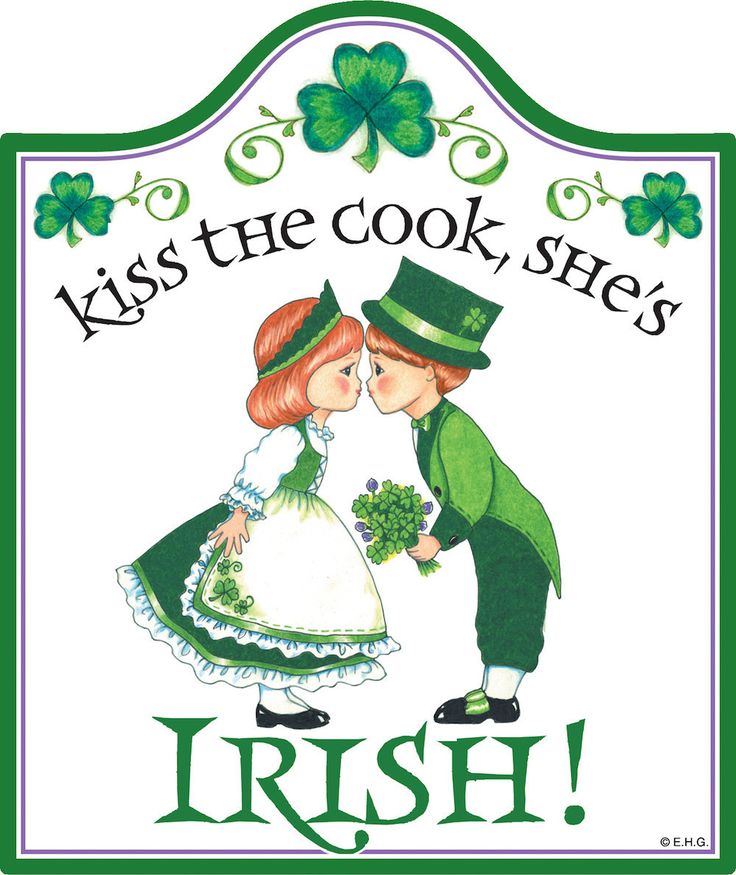
Traditional Irish Potato Soup
To learn about the history of the potato in Ireland see article in "Stories and Tales belos
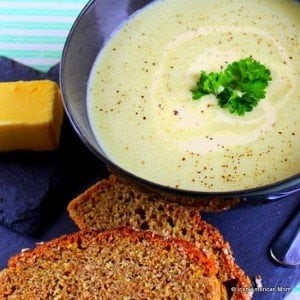
A simple, easy to make but deliciously tasty soup.
Cook Time: 30minutes minutesTotal Time: 50minutes minutes Servings: 6 Calories: 286kcal
Ingredients
1 large onion
3 medium potatoes
2 ounces butter
4 cups chicken stock use vegetable stock for a vegetarian soup
½ cup cream
salt and pepper to season
parsley to garnish
Instructions
Peel and dice the onion and potatoes.
Melt the butter in a large saucepan.
Add the onion and cook for one minute coating completely in butter.
Add the potatoes and toss well with the onion and melted butter.
Sweating onions and diced potatoes in a saucepan for potato soup
Cover the saucepan and sweat the vegetables for 10 minutes, shaking the pot every few minutes to prevent sticking.
Pour in the stock and simmer the soup for 20 minutes until the potatoes are tender.
Turn off the heat and allow to cool,
Purée the soup using a hand held blender or in batches in a blender.
Add the cream and mix well together.
Season with salt and pepper to taste.
Reheat to serve, and garnish with a swirl of cream and parsley.
Enjoy

If you have a cherished family Irish recipie share it with us.
And if there's a story that goes with it.....even
better! mail click here ![]()
Fireny@aol.com
![]()
filíocht pronounced FILL-ee-uhkht meaning Poetry

This Moment
by Eavan Boland
A neighbourhood.
At dusk.
Things are getting ready
to happen
out of sight.
Stars and moths.
And rinds slanting around fruit.
But not yet.
One tree is black.
One window is yellow as butter.
A woman leans down to catch a child
who has run into her arms
this moment.
Stars rise.
Moths flutter.
Apples sweeten in the dark.

One month into the first lockdown of the pandemic in 2020, the Irish poet, Eavan Boland died.
‘Her 1994 poem “This Moment” was shared on social media as a memorial, sparking hope for those in isolation with its depiction of a neighbourhood (neighborhood) at dusk.’
“Poetry is just imbued in Irish society very very strongly and we turn to it at these kind of times,” poet Catherine Ann Cullen’ said at the time.
![]()
Stories and Tales

"seanchaí"
(pronounced "shan-a-key")
comes from the Irish words "sean" meaning old and "caí" meaning to tell.
![]()
Baltimore Beacon -
West Cork's Watchful Sentinel
If you ever find yourself wandering the winding roads of West Cork, you might just come upon a sight that stops you in your tracks - a tall, white column standing proudly on a rocky hill above the sea.
That's the Baltimore Beacon, or as locals fondly call it, Lot's Wife. Perched high above the Atlantic, she's been keeping silent watch over the harbor for generations, her white face gleaming in the sunshine and glowing softly in the evening light.
![]()
There's something timeless about that view. The salty breeze off the Atlantic, the cries of the seagulls, the endless blue stretching out toward America means it's the kind of place that makes your heart swell a little, especially if you carry even a drop of Irish blood.
Standing there, it's easy to imagine the countless souls who've looked out from that same cliff, searching for home, for safety, or for the next great adventure.
A Tower Born from Tragedy
The Beacon's story, like so many in Ireland, is rooted in both sorrow and strength. The white stone structure we see today was built around 1849, during one of the darkest times in Irish history, the Great Famine. But even before that, Baltimore had known its share of heartbreak.
Back in 1631, this quiet seaside village suffered the Baltimore Pirate Raid, when Algerian corsairs sailed into the harbor under cover of darkness and captured over a hundred men, women, and children.
They were carried off into slavery, never to see their home town again. It's said that warning fires once burned on this headland, trying to signal danger, but help came too late.
When the new Beacon was built centuries later, some say it was a tribute to that need for watchfulness. It was built as a symbol of protection and vigilance. Out of tragedy came a light, or at least the memory of one, standing tall against the horizon. A
Guiding Light for Sailors
Now, to be clear, the Baltimore Beacon isn't a lighthouse. There's no lantern shining from its top, no keeper tending to its flame. Instead, it's what sailors call a daymark, or a fixed landmark that helps guide ships safely into the harbor by daylight. Painted white to catch the sun, it's visible for miles out to sea.
From its perch above the cliffs, the Beacon guards the entrance to Baltimore Harbour, looking out toward Sherkin Island, Cape Clear, and the mighty Fastnet Rock, which is Ireland's last outpost before the vast Atlantic.
Generations of fishermen, sailors, and emigrants have looked to that Beacon as their final glimpse of home. It's a sight that stays with you, especially if your heart's been pulled across the sea.
Lot's Wife - A Touch of Irish Wit
Of course, in true Irish fashion, we couldn't leave well enough alone without giving the Beacon a nickname. Around these parts, she's known as "Lot's Wife", after the biblical woman who turned into a pillar of salt for looking back at Sodom.
It's said with a wink and a smile. "There she is now, still looking back!"
There's that classic Irish blend of faith and humor, finding lightness even in solemn things. Some locals swear she's keeping an eye on the fishermen, making sure they behave themselves. Others say she's a reminder not to look back too much, though anyone who's seen that view will tell you, it's mighty hard not to.
Visiting the Beacon Today
Reaching the Baltimore Beacon is half the fun. From Baltimore village, a narrow lane winds its way up the hillside, with wildflowers brushing the stone walls and sheep dotting the fields. The walk to the top is short but steep, and when you reach it, oh, what a reward awaits you!
![]()
The whole of Roaringwater Bay stretches before you, dotted with islands and fishing boats. On a clear day, you can see all the way to Mizen Head and beyond. Sunset is pure magic here with the sky melting into golds and pinks as the Beacon casts its long shadow over the cliffs.
If you ever find yourself in West Cork, promise me you'll take that walk. Bring a jacket, a camera, and a moment to just breathe it all in. The view alone will stay with you, but it's the feeling that lingers - that deep, peaceful sense of belonging to something older and grander than yourself.
Light, Loss, and Resilience
To me, the Baltimore Beacon is more than a navigation marker. It's a symbol of endurance, a reminder that even through famine, raids, and storms, the Irish spirit keeps shining.
Our ancestors built monuments not just of stone, but of meaning. They left behind beacons, both literal and figurative, to guide us through life's fog and uncertainty.
So whether you're standing on the cliffs of West Cork or half a world away, may the Beacon's story remind you to hold fast, to look to the light, and to keep moving forward, no matter the winds that blow.
Slán agus beannacht,
Pronunciation - slawn ah-gus ban-ock-th
(Goodbye and blessings)
Mairéad -
Irish American Mom
Watch a video on Mairéad's website
and be sure to sign up for her great newsletters by clicking below
![]()
On This Day in Irish History 15 October 1843
– One of the most powerful voices in Irish history, Daniel O’Connell, held the last of his legendary “Monster Meetings” at Clontarf, just outside Dublin.
More than 200,000 people gathered peacefully to demand the repeal of the Act of Union, the law that merged the Irish and British parliaments in 1801. O’Connell, known as The Liberator, had already won Catholic Emancipation in 1829 and now turned his focus to Irish legislative independence.
The British authorities, fearing the strength of his peaceful movement, banned future gatherings.
True to his principles, O’Connell chose to cancel the next meeting rather than risk bloodshed. Though the campaign was halted, it sparked a flame that would burn through Irish history.
The dream of Irish self-rule didn’t end in Clontarf; it was only beginning.
Did you know?
Clontarf was also the site of the famous Battle of Clontarf in 1014, where Brian Boru defeated the Vikings. Two great moments of Irish history in one place!
![]()
For All of Our Irish Dancers
Try this when you can't find a partner
submitted by Colum
click below to watch
![]()
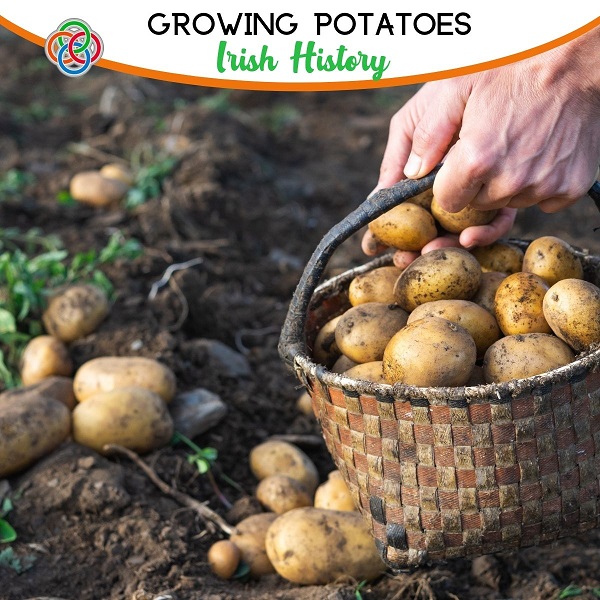
From Foreign Tuber to Irish Treasure:
The Arrival of the Potato in Ireland
Did you know that Ireland's deep-rooted connection with the potato began only a few short centuries ago?
It may surprise many to learn that this beloved staple, so firmly planted in our Irish identity, didn't arrive on our shores until the 1600s. Imagine that!
For centuries before the potato, Irish tables were filled with oats, dairy products, and vegetables such as cabbage and leeks. But then, along came this curious tuber, freshly arrived from across the seas, and everything began to change. Potatoes in a basket with text banner
The first recorded sale of potatoes in Europe took place in Seville, Spain, in 1573. From there, the spud slowly made its way northward, eventually landing on Irish soil in the 17th century.
It was a quiet arrival, but its impact would echo through the centuries. Some hail it as a blessing, a miracle crop that nourished generations of Irish families.
Others see it as the beginning of a long dependency, one that would prove devastating during the dark days of the Great Famine. In this post, we'll take a look at the potato's journey to Ireland, how it won over the Irish heart (and stomach), and why its story is both one of sustenance and sorrow. So put the kettle on, grab a cozy cuppa, and let's dig into the tale of the mighty spud and its fateful Irish welcome.
The Origins of The Potato
Long before the humble potato ever nestled into Irish soil, it was thriving in the high mountains of South America. For thousands of years, the people of the Andes, particularly the Inca, were cultivating this remarkable tuber long before Europeans ever laid eyes on it.
Grown at altitudes that would wither most crops, the potato was ideally suited to the rocky, cool climate of Peru and Bolivia. The humble spud provided sustenace to many in a harsh landscape.

Boiled floury Irish potatoes with split skins on a plate
The story of the potato's journey to Europe begins with the Spanish conquistadors in the 16th century. As they explored and, sadly, plundered the riches of the New World, they also brought back unfamiliar plants and foods.
Among the gold and silver came this earthy treasure, strange in appearance yet full of promise. By 1573, Spanish shoppers were investigating this strange, brown vegetable with soft tender flesh when cooked.
Now, no story about the potato's arrival in Ireland would be complete without mentioning Sir Walter Raleigh, a name wrapped in legend and often linked to the first Irish spud. Many believe he introduced the potato to Irish soil at his estate in Youghal, County Cork, sometime in the late 1500s.
It's a romantic tale, to be sure, but historians aren't entirely convinced. While Raleigh did help popularize the potato in parts of Europe, there's little solid evidence that he personally planted the first one in Ireland. Still, it's a story that's stood the test of time, and like many things in Irish history, the truth likely lies somewhere between fact and folklore.

Vintage image of a gentleman Sir Walter Raleigh
At first, the potato wasn't exactly welcomed with open arms in Europe and Ireland. Some thought it was fit only for animals, while others feared it caused illness. It was even said to be linked to leprosy and forbidden by some superstitious cooks.
Gradually, its true value began to be recognized, not for its appearance or glamour, but for its hardiness, versatility, and the nourishment it could offer even in poor soil. Little did anyone know that this unusual new food, once regarded with suspicion and even disdain, would eventually become deeply integrated into the fabric of Irish life.
However, that part of the story was still on the horizon, waiting to unfold beyond the 17th century.
The Journey to Ireland
The path the potato took to Ireland is a winding one, part history, part mystery. While Spain may have been its first European stop, the jury is out on whether or not Sir Walter Raleigh landed in County Cork with this precious tuber.
The potato likely made its way to Ireland through a mix of trade, colonization, and curiosity. Some believe that English settlers or returning soldiers from the continent introduced it in the early 1600s, possibly as part of an effort to introduce new crops to improve agriculture on Irish estates.
Others believe it arrived through seafaring merchants, landing in southern ports such as Cork or Waterford, where exotic goods and new ideas often came ashore. However it got here, it wasn't met with immediate fanfare. In fact, for many years, it was treated more as an oddity than a food staple.

Vintage map of the Americas 17th Century Spanish Map of the Americas
In its early Irish days, the potato was often grown in gardens more for decorative purposes than for dinner. It bloomed with lovely white or purple flowers, and some even thought it was better suited for pigs than people.
But slowly, over the 17th century, Irish farmers began to notice something remarkable: this strange little tuber thrived in Ireland's damp, mild climate and poor soil. Land that wouldn't yield much else did well supporting this humble vegetable.
And what's more, the Irish soon discovered the spud was filling and nutritious. Bit by bit, year by year, the potato began to win a place on Irish tables, especially among the rural poor who needed a dependable source of food. Little did they know this quiet transformation would change Irish life forever.
Irish Adoption and Popularity
As the 18th century rolled in, the potato began to take root not just in the soil but in the hearts and homes of the Irish people. What started as a curiosity grew into a lifeline, especially for the rural poor.
Unlike grains, which needed better land and longer growing seasons, potatoes could be planted in small plots, even in the stony fields of the west or tucked into the corners of cottage gardens. And from that little patch of earth, a family could gather enough food to last them through the winter. It was a quiet kind of miracle.
The more the Irish worked with the potato, the more they came to rely on it. It was easy to grow, rich in nutrients and could be boiled, mashed, roasted, or mixed into hearty dishes. Pair it with a bit of buttermilk or a few scallions, and you had a simple meal that kept body and soul together. For many, this meant survival. a green striped graphic with text and an image of unpeeled potatoes

The potato didn't just feed individuals; it sustained entire communities. By the early 1800s, it was said that the average Irish laborer ate several pounds of potatoes a day. And while that may sound like an exaggeration, for many households, the potato truly was the centerpiece of every meal.
In a land marked by hardship, this unassuming tuber offered a kind of security that few other crops could.
A Double-Edged Blessing
As the potato became more deeply woven into Irish life, it brought both blessings and risks. On the one hand, it allowed large families to survive on small plots of land, especially important as Ireland's population soared in the 18th and early 19th centuries.
The potato made it possible for even the poorest tenant farmers to ward off hunger. Children grew strong on bowls of champ and colcannon, and the daily rhythm of rural life often revolved around planting, tending, and harvesting the precious crop. In many ways, the potato helped knit together a sense of resilience and resourcefulness that remains a part of Irish culture today.

Potato field Potato Field in County Down
But this gift came with a shadow. With so much of the country relying almost entirely on one food for sustenance, the Irish diet became dangerously unbalanced. Livelihoods, health, and even the survival of whole families came to depend on a single crop growing as it should, year after year.
Few other options were available, especially for the rural poor, who had limited access to meat, dairy, and grains in sufficient quantities. It was a fragile system; one bad harvest could spell disaster.
And sadly, the day would come when that disaster arrived with a vengeance, bringing sorrow and hardship on a scale Ireland had never known.
The Dark Legacy: Prelude to the Great Famine
By the mid-1800s, the potato had become so central to Irish life that it was no longer merely a source of food. It meant survival.
For millions, it was breakfast, dinner, and supper all rolled into one. Fields were planted wall to wall with spuds, and many families, especially those living in small thatched cottages on rented land, had little else to eat.
So when the potato crop failed in the summer of 1845, it wasn't just a poor harvest. It was a catastrophe.

Potato plant with blight Potato Plant with Blight
A strange, unfamiliar blight swept across the countryside, turning lush green plants to black mush almost overnight. The tubers beneath the soil rotted before they could be lifted. Hopes for the harvest were dashed, and with each passing year, the blight returned, cruelly and relentlessly.
Ireland's heavy reliance on the potato left millions vulnerable. Famine soon gripped the land. With no proper relief from the British government, what had once been a source of sustenance became a symbol of sorrow.
In just a few short years, over a million souls were lost to starvation and disease. Another million fled across the sea, carrying with them memories of hardship and the enduring love for the potato that had once fed them so well.
Reflections on the Potato's Legacy
Despite the sorrow tied to the Great Famine, the potato's story in Ireland didn't end in tragedy. In many ways, it endured, just like the Irish spirit.
After the famine, the potato eventually returned to Irish fields and Irish tables, though never again with quite the same dominance. Families grew a greater variety of crops and relied on more balanced diets, but the potato remained a beloved staple. It was no longer the only food, but it was still, for many, the favorite.
Today, the potato remains a cherished staple in Irish cuisine and culture. From creamy colcannon and buttery champ to crispy roasties and hearty boxty, it appears in humble weekday meals and festive holiday feasts alike.
And for those of living far from Ireland, cooking with potatoes often brings a comforting connection to our heritage, a way of honoring the generations who came before us, who tilled the earth and made do with little, but always kept their families fed.
The potato may have come from far away, but it found a lasting home in Ireland and in Irish hearts everywhere.
Closing Thoughts on the Humble Spud
And so, the story of the potato in Ireland is one of complexity, hardship, hope, struggle and survival. From its unlikely beginnings in the Andes to its deep roots in Irish soil, the potato not only shaped the Irish diet but also the Irish story.
It fed the poor, changed farming, and left a mark on history that can still be felt in kitchens and family recipes around the world today.
I'd love to hear from you! Do you have a favorite potato dish passed down in your family? Maybe a cherished recipe from your granny's kitchen or a story of how your ancestors made do with simple ingredients?
Please share your thoughts at Fireny@aol.com, and let's keep the conversation and the traditions going, one potato at a time.
Slán agus beannacht,
Pronunciation - slawn ah-gus ban-ock-th
(Goodbye and blessings)
Mairéad -- rhymes with parade
Irish American Mom
be sure to sign up for her great newsletters by clicking below
![]()
News of Interest,,,,,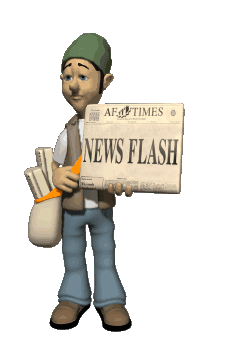
Ireland's economy on track to be
fastest-growing in the world this year
Ireland's economy will be the fastest-growing among the world's most advanced economies this year, according to the International Monetary Fund (IMF).
George Morahan @ BusinessPlus.ie Oct 16, 2025

Ireland "disproportionately contributed to euro area growth in Q1," the IMF said. Getty Images
The IMF's latest World Economic Outlook projects that Ireland's gross domestic product will grow by 9.1% this year, up substantially from the previous forecast of 2.3% in April.
Irish GDP, which includes the effects of multinationals, increased 2.6% in 2024 and is expected to grow by 1.3% in 2026, down from 2.1% in April's forecast. The study forecasts consumer price of inflation of 1.7% this year and next year.
Ireland's current account balance as a proportion of GDP is forecast to decline from 16.2% to 11.1% this year before rising to 11.5% in 2026, while unemployment will stabilise at 4.6%.
The IMF said that Ireland "disproportionately contributed to euro area growth in Q1, with export performance driven by pharmaceutical sector transactions, partly as a result of front-loading" ahead of the introduction of US tariffs."
The outlook for Europe has improved since the EU-US trade deal was agreed, and the eurozone economy is now expected to grow 1.2% in 2025 and 1.1% in 2026, although well below the growth seen in the US.
Germany is on track to increase GDP by 0.2% this year and 0.9% next year after recovering from recession, while France's economy growth is expected to accelerate from 0.7% to 0.9% next teat.
The UK is projected to grow by 1.3% this year and next.
The IMF has raised its forecast for global growth this year from 3% to 3.2% and left its prediction for 2026 unchanged at 3.1%.
"The good news is that growth impact of the trade shock is modest so far," IMF chief economist Pierre-Olivier Gourinchas told reporters ahead of the publication of the WEO, adding that the private sector had also supported growth by responding to Trump's tariffs in an agile way.
He added that other factors, such as the AI boom and fiscal policies in Europe and China, had also helped to prop up the global economy, but warned that trade uncertainty continued to pose downside risks.
US President Donald Trump threatened fresh tariffs on China over Beijing's decision to tighten export controls on the rare earth minerals crucial to the defence and high-tech sectors.
"Everything is very fluid," Gourinchas said. "But I think it's a very useful reminder that we live in a world in which this kind of increase in trade tensions, increase in policy uncertainty, can flare up at any time."
The IMF expects the global inflation rate to remain elevated at 4.2% this year and 3.7% in 2026, underpinned by elevated inflation in several countries, including the US.
The group now projects the US economy to grow 2% this year and 2.1% next year, both down from 2.8% in 2024. China's growth is due to slow from 5% to 4.8% this year and 4.2% next year, in line with previous estimates.
China slowdown has been driven by a reduction in net exports, which have been at least partly offset by growing domestic demand fuelled by "policy stimulus," the IMF said.
*This article was originally published on BusinessPlus.ie.
![]()
First-time voter?
Everything you need to know ahead of
Ireland's Presidential Election 2025
Here is all the important information for first-time voters ahead of Ireland's Presidential election this month.
Chloe OKeeffe @ Extra.ie Oct 17, 2025

Catherine Connolly (L) and Heather Humphreys (R). Conor O'Mearain/P00L/PA/RollingNews.ie
Ireland is just one week away from electing a new President, with just two candidates in the running for the prestigious post.
This October will see Michael D Higgins retire from his role after serving the maximum of two terms (14 years).
Following a gruelling process in which Independent candidates tried to get their names on the ballot, the final two have been confirmed as Independent TD Catherine Connolly and Heather Humphreys, who has been put forward by Fine Gael.
Meanwhile, Fianna Fáil candidate Jim Gavin dramatically pulled out of the contest after it emerged he failed to pay back a former tenant €3,300 in overpaid rent, but his name will still be on ballot papers.
Here is all the important information for first-time voters (or if you’ve forgotten how the process works)… What date is Ireland's presidential election?
The Presidential Election will take place on Friday, October 24. Polls will open at 7:00 a.m. and close at 10:00 p.m.
The election of a President must take place within 60 days of the current President’s term ending. Michael D Higgins was inaugurated for his second term on November 11, 2018, meaning the election had to take place on or before November 10, 2025.

Ireland's outgoing President Michael D. Higgins. (Getty Images)
Who are the candidates?
Following a lot of controversy over who would be on the ballot, the two candidates are Catherine Connolly and Heather Humphreys.
Independent TD Catherine Connolly from Galway has received the backing of several left-wing parties, including Sinn Féin, People Before Profit, and Labour.
Meanwhile, former Fine Gael deputy leader Heather Humphreys is her party’s nominee.
With just two candidates on the ticket, it is the smallest list of potential Presidents since the 1990 election, even smaller now with Gavin no longer running.
Can I vote?
Irish citizens aged 18 years or older are eligible to vote. You must be registered to vote with An Coimisiún Toghcháin, with Chief Executive Art O’Leary urging those not registered to do so.
Speaking to RTÉ, he said: "Your vote is your voice, and if you don’t vote, you allow other people to speak for you and you would never allow that to happen in any other part of your life."
The deadline to register for a postal vote was Monday, September 29, while the deadline to register/update details for voting in-person was Tuesday, October 7th.
How do I register to vote?
You can register or check if you are registered to vote online at Check the Register. You can also check where you’re polling station is — this information will also be available on your polling card.
Your polling card will arrive by post ahead of the Presidential Election and should be brought to the polling station alongside a form of ID.
If you do not receive your polling card but are registered, you can still vote. ID will still be required.
How do I fill out a ballot sheet?
If this is your first time voting, fear not; it is very straightforward. On arriving at the polling station, voters will enter a private voting compartment to complete the provided ballot paper.
Candidates will appear in alphabetical order and will have their photograph beside their name.
Indicate your preference by writing ‘1’ beside your first choice, followed by ‘2’ beside your second choice, and so on. You do not need to put a number beside each candidate.
What voting system does Ireland use?
The Single Transferable Vote system is used in Irish elections. First, the minimum number of votes needed to guarantee the election is calculated. This is called the quota.
Ballot papers are then sorted according to first preference votes for each candidate, with those hitting the quota following the first count deemed elected.
If no candidate receives more than the required number of votes, they are not elected, and the candidate with the lowest number of votes is eliminated.
Their second preferences will then be distributed.
What is a spoiled vote?
Ballot papers that cannot be counted are referred to as spoiled votes. Spoiled votes can be due to the paper being left blank, voters ticking their preferred candidates rather than numbering them, or their writing being unclear.
If a voter writes their name on the ballot paper, this is also a spoiled vote.
*This article was originally published on Extra.ie.
![]()
Irish voting rights group reiterates call for Irish electoral reform
VotingRights.ie has updated its Citizenship Papers collection while reiterating its calls for Irish electoral reform.
Kerry O'Shea @kerry_oshea Oct 16, 2025
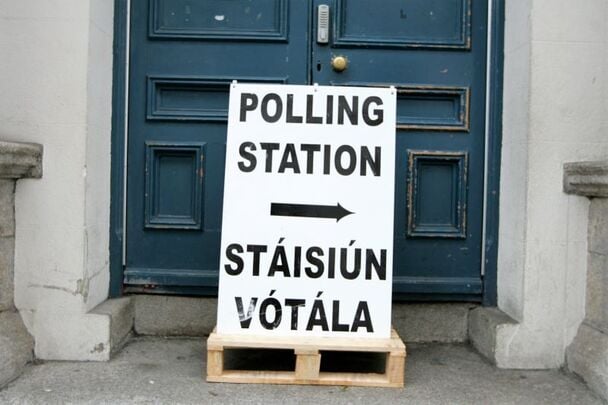
VotingRights.ie calls upon the Irish Government to fulfill its commitment to hold a referendum extending the right to vote in future Presidential elections to all Irish citizens living outside the State, including those living just across the Border in Northern Ireland.
VotingRights.ie has this week published a second edition of The Citizenship Papers - a series of essays that advocate for voting rights for all Irish citizens - while reiterating its calls for Irish electoral reform.
Founded in 2016 by the late Senator for the Irish Abroad Billy Lawless, the non-partisan VotingRights.ie calls upon the Irish Government to fulfill its commitment to hold a referendum extending the right to vote in future Presidential elections to all Irish citizens living outside the State, including those living just across the Border in Northern Ireland.
The Citizenship Papers were originally assembled for VotingRights.ie's 2021 conference “Citizenship, Emigrants, and Voting Rights Post-Brexit," but additional essays have been added over the years, leading to this week's re-release. VotingRights.ie describes its new edition of The Citizenship Papers as "a landmark collection of essays and proposals on the future of Irish democracy."
Among the writers featured in the updated collection are citizens from Northern Ireland, Ireland, Europe, Canada, and the US who come from a variety of backgrounds - "ordinary voters, civil society leaders, legal scholars, historians, political scientists, and human rights advocates," VotingRights.ie says.
Notable authors include Ireland's former Minister for the Diaspora Ciarán Cannon, Claire Mitchell author of "The Ghost Limb: Alternative Protestants and the Spirit of 1798," political scientist Theresa Reidy, and Ben Collins, author of "The Irish Unity Dividend."
The new edition of The Citizenship Papers was officially launched at Leinster House in Dublin on Tuesday, October 14. Speakers at the launch included Independent Senator Frances Black, Fine Gael TD Joe Neville, SDLP MLA Cara Hunter, Queen's University Belfast Professor Colin Harvey, founder of 50/50 NI Aoife Clements, and campaigner Emma DeSouza.
DeSouza, the Vice Chair for VotingRights.ie, said the essays "advocate for voting rights for all Irish citizens - Irish passport holders living in Northern Ireland as well as citizens living abroad."
She continued: "Ireland has one of the most restrictive voting rights systems in all of Europe. Reform is long overdue and a vital stepping stone toward a united Ireland.
"We also see this as an opportunity to encourage the two presidential candidates to clearly state their views; are they content with the democratic status-quo or do they see an opportunity to make the Republic a more robust democracy?"
VotingRights.ie reform agenda
While releasing its new Citizenship Papers collection, VotingRights.ie reiterated its call for specific reforms: "to extend voting rights to all Irish citizens abroad, create Seanad representation for Northern and global Irish citizens, reestablish a Minister for Electoral Reform, establish a universal postal voting system, and align Ireland with EU democratic norms and reflect its commitment to freedom of movement and inclusion."
The group said in a statement: "At a time when Ireland’s global connections have never been stronger, these reforms are both necessary and timely.
"Irish citizens abroad advance trade, diplomacy, and culture; their voices must also help shape the nation’s democratic future.
"As the publication emphasises, deciding who gets to vote is not a technical issue; it is a defining question for Ireland’s next century."
![]()
A Little Humor 
A drunk man, who smelled of liquor, sat down on a subway next to a priest. The man's tie was stained, his face was plastered with red lipstick, and a half-empty bottle of gin was sticking out of his coat pocket. He opened his newspaper and began reading. After a few minutes the man turned to the priest and asked,
'Say Father, do you know what causes arthritis?'
The priest replies,
'My Son, it's caused by loose living, being with cheap, wicked women, too much alcohol, contempt for your fellow man, sleeping around with prostitutes and lack of a bath.'
The drunk muttered in response,
'Wow, I never knew! ' and returned to his paper.
The priest, thinking about what he had said, nudged the man and apologized.
'I'm very sorry. I didn't mean to come on so strong. How long have you had arthritis?'
The drunk answered, '
Oh, I don't have it, Father.
I was just reading here that the Pope does.'
MORAL: Make sure you understand the question before offering an answer. Things are not what they seem to be.

![]()
Times when you might be excused for using foul language

![]()
Funny Headlines
not a headline but still funny
sign on sutck copy machine after trying to clear a jam with a pen.


![]()
"Funny Statue Photos"


![]()

Church Bloopers


![]()
From my wife Donna

My wife made me put in the above cartoon....I don't get it!!!!!!..Tommy Mac
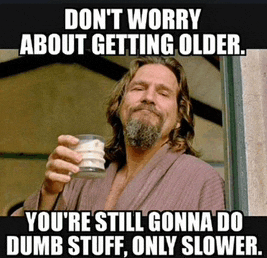


![]()
Many News items, stories, recipies, jokes and poems are taken from these sites with their generous permission.
Please support them my clicking on the links below and sign up for their free newsletter.
 .....
..... ....
....
Subscribe
to IrishCentral  ..
.. ....
....

 .........
.........![]() ......
......
![]()
Welcome to
Tír na mBláth
(Land of Flowers)
Tír na mBláth is one of hundreds of branches throughout the world of Comhaltas Ceoltóirí Éireann (CCÉ) pronounced "kol-tus
kyol-tori air-in", the largest group involved in the preservation of
Irish music, dance and song.
throughout the world of Comhaltas Ceoltóirí Éireann (CCÉ) pronounced "kol-tus
kyol-tori air-in", the largest group involved in the preservation of
Irish music, dance and song.
Our board and membership is made up of Irish, Irish descendants, and all those who support, celebrate and take pride in the preservation of Irish culture.
We also aim to promote good will and citizenship.
Interested in belonging to Tír na mBláth? Feel free to download our membership form
Facebook page is at Tír na mBláth
Our meetings and several events are held at Tim Finnegan's Irish Pub in Delray Beach Florida.
![]()
Well, that's it for this week.
Slán abhaile
Pronunciation: slawn a-wol-ya
Meaning: Safe Home

Sláinte,
Tom Guldner (Tommy Mac)
Slán agus beannacht, (Good-bye and blessings)
Fireny@aol.com
Number of visitors to this website since Sept 2022
..